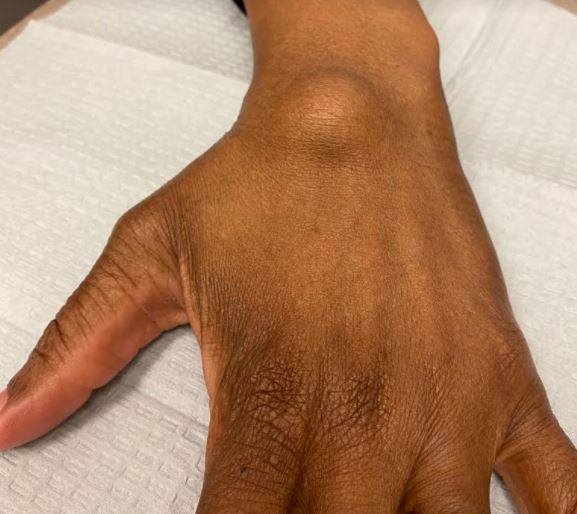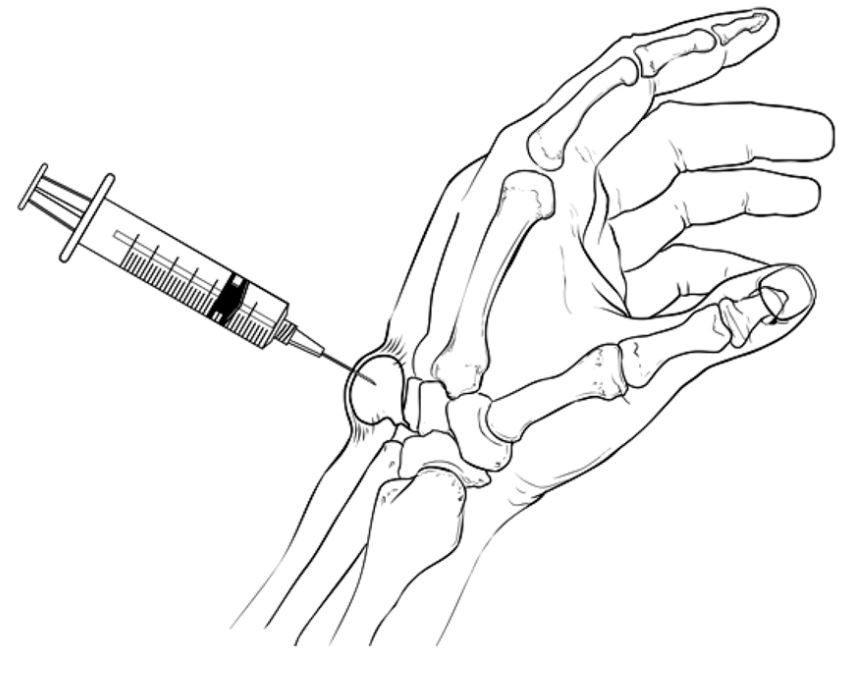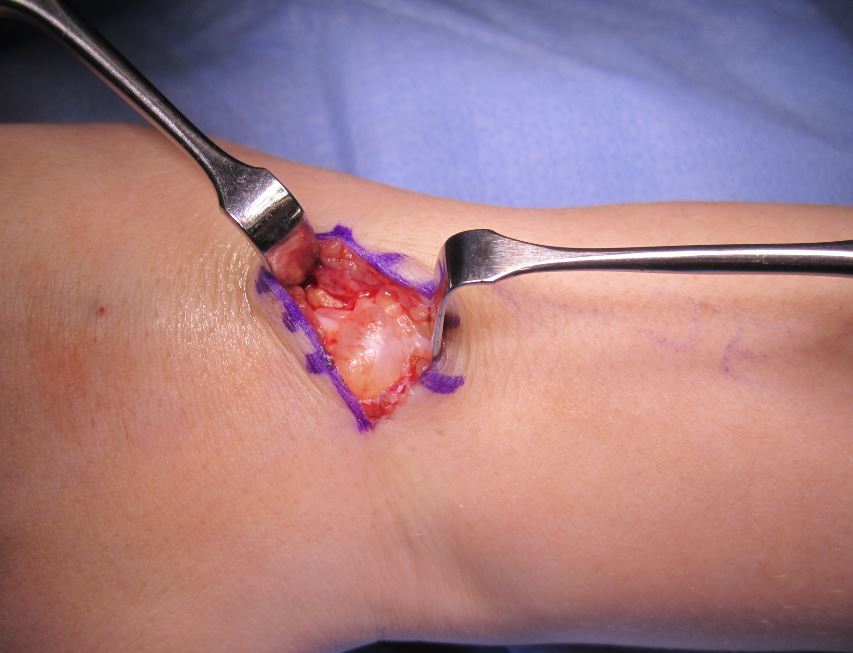Do you have a bump in your wrist? A wrist ganglion cyst is a very common reason for this. These cysts usually arise near a joint or tendon. The most common location is the back of the wrist (see image below). They can occur in people of all ages and are common in young adults. The cause of a ganglion cyst is unknown in most cases. One theory is that the cyst arises from joint fluid which has leaked from a small opening in the joint capsule. The cyst is filled with a thick, jelly-like fluid and usually has a connection with a joint or tendon below. Many patients report that the cyst fluctuates in size, and in some cases the cyst can go away on its own.

Most ganglion cysts are diagnosed by history and physical exam by a trained physician. Since ganglion cysts are fluid-filled, a light shined directly on the mass will illuminate the cyst. X-ray, ultrasound, and MRI testing are not usually required to make the diagnosis in typical cases.
What are the treatment options? There are three common treatments for a ganglion cyst in the wrist: observation, aspiration and surgical excision.
OBSERVATION: Also known as “watch and wait.” Since ganglion cysts are benign (not cancer), surgery is not required to remove them. Cysts which are not painful and do not interfere with function can be left alone and monitored. Some cysts can go away on their own. If the cyst becomes larger, painful, or interferes with function, further options should be discussed.
ASPIRATION: Also known as drainage with a needle. The cyst can be punctured and the thick fluid removed using a needle under sterile conditions. This is a quick procedure which is performed in the office. There is a high chance that the cyst comes back, however. There is a small risk of bleeding, pain, and infection from this procedure. Do NOT try this at home!

SURGICAL EXCISION: Excision of a ganglion cyst is performed in the operating room and requires an incision. During surgery, the cyst is removed including the base which goes down to the joint below. Removal of the connection to the joint reduces the chance of recurrence. Gardeners realize that the roots of the weed need to be removed, or else it will grow back.

In the past, some physicians have recommended simply popping the cysts by hitting them with a heavy book or Bible. For this reason ganglion cysts have been called “Bible cysts.” This is not recommended since damage can be done to the surrounding area and most cysts recur with this technique.
What is the recovery from ganglion cyst excision surgery? Ganglion cyst excision is performed on an outpatient basis. Most people can return to light duty work in a few days as the pain and swelling subside. Hand therapy is sometimes helpful after this procedure to improve range of motion and strength. Patients should avoid forceful use of the hand for approximately 4 weeks after surgery. Normal use of the hand is resumed as comfort allows. Complications from surgery include cyst recurrence (5-10%), wrist stiffness, scar tissue, and infection.
